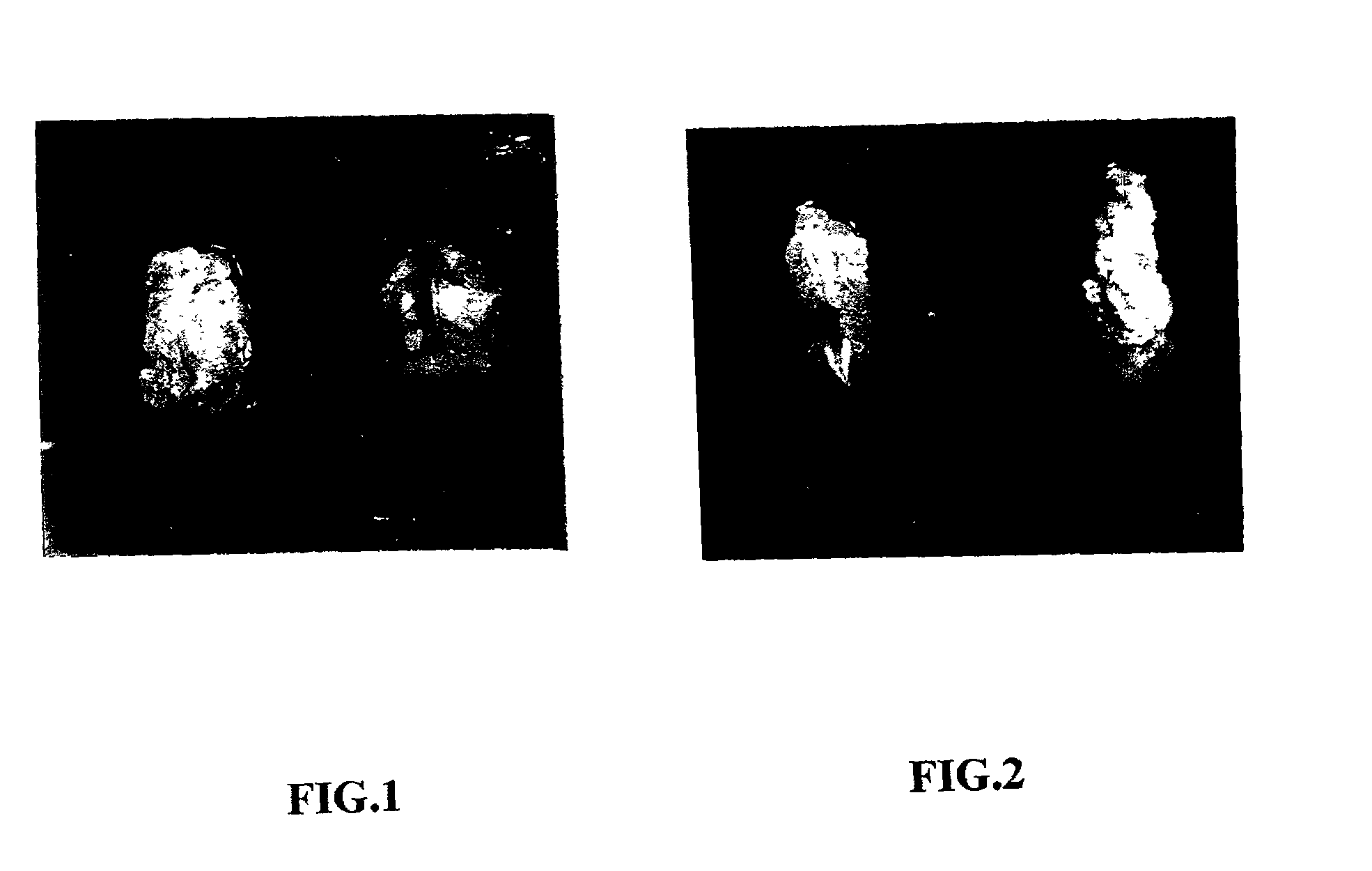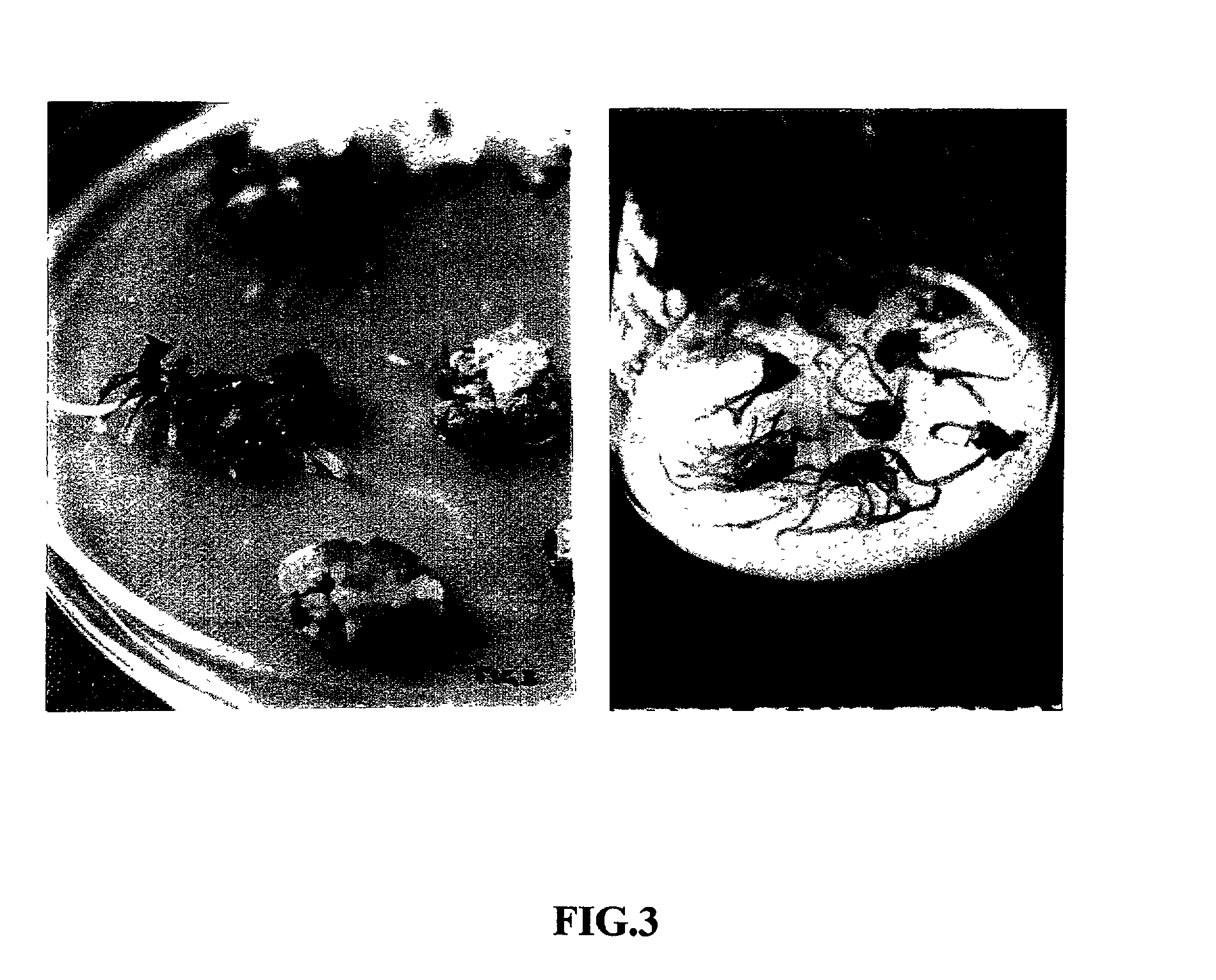Method for microproduction of tea plants from leaf explants
a technology of explants and tea leaves, which is applied in the field of micro-production of tea plants from leaf explants, can solve the problems of 50% loss in yield, insufficient tea production to meet domestic and world market demands, and genetic segregation
- Summary
- Abstract
- Description
- Claims
- Application Information
AI Technical Summary
Benefits of technology
Problems solved by technology
Method used
Image
Examples
example-2
[0078] Any leaf ranging from completely folded, half opened or fully expanded leaf explants from 50 years old selected plants of the important cultivars (Chinary, Assamica and Cambod) from the Institute of Himalayan Bioresource Technology's Experimental farm, Banuri, Palampur (36.degree. N and 78.18.degree. E and 1290 m above sea level) were used as explants. The leaves were cleaned carefully with a sable hair brush and liquid detergent, washed in Tween 20 containing Bavistin (0.1%) and streptomycin (0.05%) and surface sterilized in 0.01% mercuric chloride solution containing a drop of liquid detergent followed by a thorough rinse in distilled water. The sterilized explants were cultured similarly as per details given in the above mentioned protocol.
example-3
[0079] Any leaf ranging from completely folded, half opened or fully expanded leaf explants of in vitro raised plants of other hybrid cultivars like Tocklai Variety 1 were the responsive explants when they were placed on (0.8%) agar solidified basal MS medium supplemented with 3% sucrose and 2.5 to 10.0 mg / l 2,4-D (pH 5.6.+-.0.2) for 6-10 weeks at a temperature of 25.+-.2.degree. C. and a photoperiod of 16 h under cool fluorescent light of 52 .mu.mol m.sup.-2s.sup.-1. The callus thus developed after 6-10 weeks was transferred to (0.8%) agar solidified basal MS medium supplemented with 3% sucrose and 0.5 to 8.0 mg / l 6 Benzyl amino purine and 0.1 to 0.8 mg / l Indole-3-Butyric acid for rhizogenesis or adventitious root formation. After 6-10 weeks, the rhizogenic callus was transferred to (0.8%) agar solidified basal MS medium supplemented with 3% sucrose and 0.5 to 8.0 mg / l 6 Benzyl amino purine for adventitious shoot bud formation. The shoots obtained from adventitious shoot buds were ...
PUM
 Login to View More
Login to View More Abstract
Description
Claims
Application Information
 Login to View More
Login to View More - R&D
- Intellectual Property
- Life Sciences
- Materials
- Tech Scout
- Unparalleled Data Quality
- Higher Quality Content
- 60% Fewer Hallucinations
Browse by: Latest US Patents, China's latest patents, Technical Efficacy Thesaurus, Application Domain, Technology Topic, Popular Technical Reports.
© 2025 PatSnap. All rights reserved.Legal|Privacy policy|Modern Slavery Act Transparency Statement|Sitemap|About US| Contact US: help@patsnap.com



